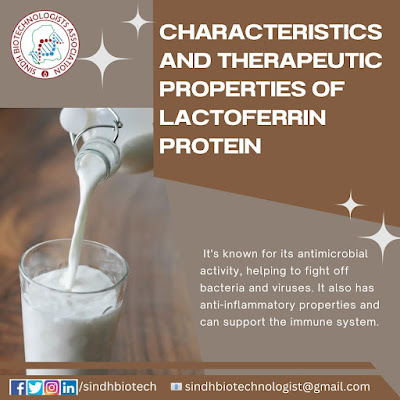Aromatherapy Is Useful For Human Health
Nowadays, complementary and alternative therapies use with conventional medicine has increase momentum. Aromatherapy is one of the best complementary therapies in which essential oil use as the major therapeutic agent. Aromatherapy is very helpful for the treatment of several diseases. The essential oils are derived from the barks, flowers, stem, roots, fruits, leaves, and other plants parts by several procedures. Baths, Inhalation, and, local application are the main procedures utilized in aromatherapy that use essential oil to penetrate the surface of human skin (Ali, B. et al., 2015).
INTRODUCTION:
The
name of aromatherapy derived from the word aroma, which means smell or
fragrance and therapy means treatment. Essential or volatile
oils are used as a therapeutic agent in aromatherapy, which are very
concentrated materials extracted from leaves, flowers, stalks, roots, and
fruits, and moreover extracted from resins. Several ancient civilizations such
as China, India, and Egypt have used aromatherapy as an alternative and
complementary therapy for 6,000 years (Michalak.
M., 2018). According to Wheeler Robins, Modern aromatherapy
was established in the 16th era in Germany, but most of the advancement has
happened in the present century (Robins,
J. L. W., 1999).
MECHANISM OF AROMATHERAPY:
For years, the essential oils have established their value as a good fragrance with a therapeutically strength on the spirit, mind, and body. Molecules of Aroma are very powerful organic chemicals of plants which make the environment free from any bacteria, disease, fungus, and, virus. Many scientists documented their multipurpose character of antiviral, antibacterial, anti-inflammatory nature. The mechanism of action includes:
- Essential oils integrate into signal of the receptor cells inside the nose while inhaled.
- These signals are transferred to the hypothalamus and limbic parts of the brain by olfactory bulb.
- Brain releases neuro-messengers such as endorphin, serotonin to connect with nervous.
- Desired change promising by body system and to provide relief of body, mind and soul (Ali, B. et al., 2015).
CLASSIFICATION OF AROMATHERAPY:
- Massage Aromatherapy:
A simple method of direct aromatherapy is an aromatherapeutic massage. The best plant oils grape seed, sesame, avocado, almond, apricot, jojoba, wheat sprout, peach, and plum stone oils used for massages aromatherapy and shown brilliant effects (Michalak. M., 2018).
- Cosmetic Aromatherapy:
Cosmetic aromatherapy uses definite essential oils for body, face, hair, and, skin cosmetic products. These cosmetic products are used for numerous effects such as moisturizing, toning, drying, and, cleansing. They have anti-acne, antiseptic, antioxidative, anti-dandruff, anti-wrinkle effects and also prevent hair damage. In facial products by the usage of essential oils healthy skin can be obtained (Michalak. M., 2018).
- Medical Aromatherapy:
The modern aromatherapy originator Rene-Maurice Gattefosse has used beneficial essential oils to patients massage throughout the surgery. Medical aromatherapy are used for pains of several origins; including joint and bones pains, mental exhaustion, anxiety, agitation, stress, nausea, sleep disorders, dementia illness, infectious and inflammatory diseases (S. Wolfgang., 2014).
- Psycho-Aromatherapy:
In
psycho-aromatherapy, certain emotions and mood can be attained by essential
oils that giving the happiness of invigoration, a pleasant memory, and
relaxation. Aromacology or
Psycho-aromatherapy both deals with the effects and study of aroma be it
synthetic or natural (Ali, B. et
al., 2015).
PLANTS USED IN AROMATHERAPY:
Various plants have been used in aromatherapy because of essential oils present in different materials of plants like barks, flowers, stems, roots, leaves, fruits, etc.
- Eucalyptus:
- It belongs to the Myrtaceae family; Eucalyptus is an evergreen long plant with up to 250 feet height.
- Eucalyptus oils have been used to activate and regulate the nervous system for headache, neuralgia, and debility.
- Immune system increases immunity against flu, measles, cold and chickenpox.
- By the usage of this plant oil throat infection, bronchitis, coughs, asthma can be treated (Ali, B. et al., 2015).
- Clary sage:
- Clary sage (S. sclarea) belongs to the Lamiaceae family. In Clary sage purple colored huge green leaves are the key source of essential oil.
- Its oil is used for uterus and womb related problems.
- Control the menstrual periods, muscle cramps and comfort tension.
- Help in regulating the sebum production therefore can be used for oily or dry skin, along with wrinkles and acne (Ali, B. et al., 2015).
- Geranium:
- Geranium (P. graveolens) belongs to the Geraniaceae family. The chemical components of Geranium essential oil are geranic, citral Eugenol, citronellol, linalool, geraniol, methone, myrtenol, sabinene, and terpineol.
- It is used in detergents and soaps due to its unique nature is ne'er challenged with soaps alkalinity.
- This oil used in aroma therapy to regulate the emotions.
- Geranium is used in eczema, dermatitis, fungal infections, skin aging, stress and anxiety associated problems (Ali, B. et al., 2015).
BENEFITS OF AROMATHERAPY:
- Muscular aches are reduced and muscle relaxation increases.
- It is very helpful for menopausal pain.
- Blood pressure or stress level can be decreases.
- Emotions like grief, depression and anxiety can be eased.
- It can be improved the digestive system also decrease constipation.
- Some problems such as stuffy, blocked noses or sore throat also treated.
- Children pulmonary function with asthma can be better with aromatherapy massage (Yatri R. Shah et al. 2011).
REFRENCES:
- Ali, B., Al-Wabel, N. A., Shams, S., Ahamad, A., Khan, S. A., & Anwar, F. (2015). Essential oils used in aromatherapy: A systemic review. Asian Pacific Journal of Tropical Biomedicine, 5(8), 601–611.
- Michalak. M. (2018). Aromatherapy and methods of applying essential oils. Arch Physiother Glob Res, 22 (2): 25-31.
- Robins, J. L. W. (1999). The Science and Art of Aromatherapy. Journal of Holistic Nursing, 17(1), 5–17.
- S. Wolfgang. (2014). Scientific Evidence of Medical Aromatherapy. Semantic Scholar.
- Yatri R. Shah., Dhrubo Jyoti Sen, Ravi N. Patel, Jimit S. Patel, Ankit D. Patel and Parimal M. Prajapati (2011). Aromatherapy: The Doctor of Natural Harmony of Body & Mind. International Journal of Drug Development & Research. Vol. 3




Comments
Post a Comment